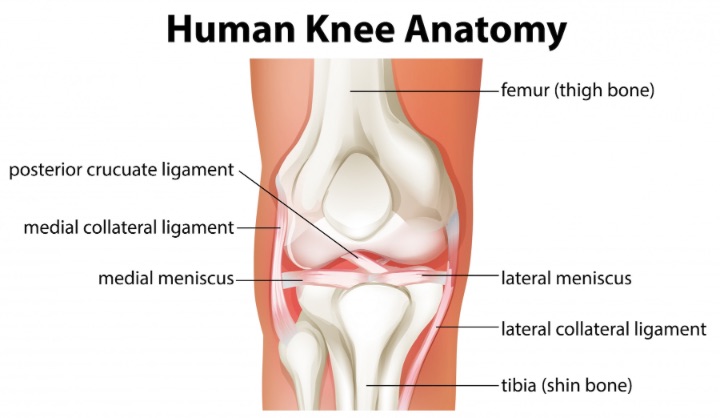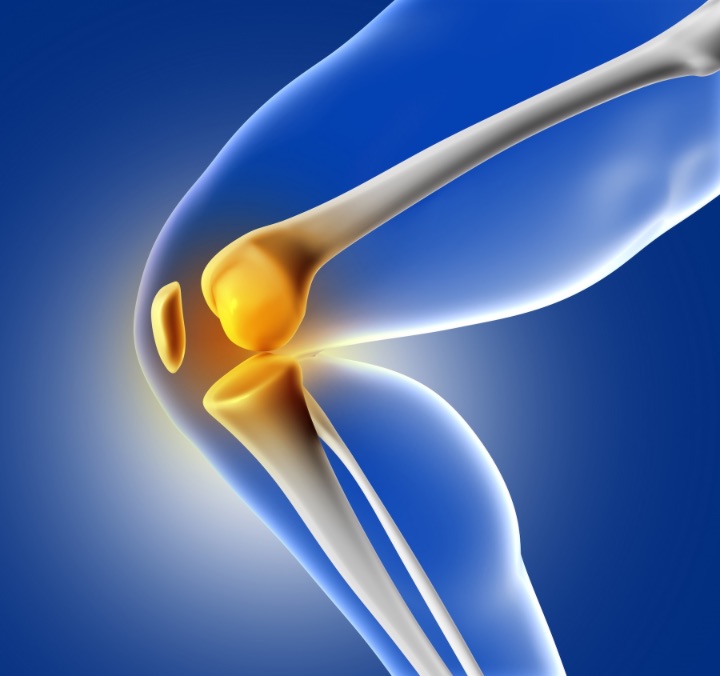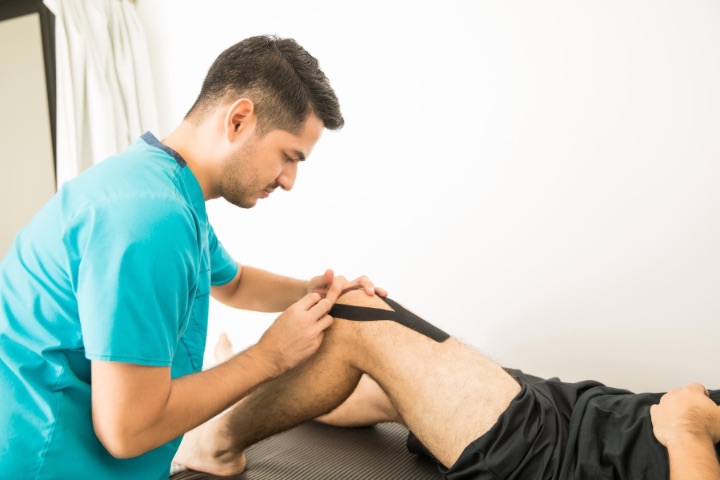Plica syndrome, characterized by inflammation in the synovial membrane of the knee joint, can cause knee pain. Find out more about its causes, symptoms, diagnosis, and treatment options. Read on to learn how you can find relief from your knee pain.
Plica Syndrome is a knee condition involving the inflammation of thin, synovial membrane folds within your knee joint, known as plicae, including the medial femoral condyle and medial patellar plica. This syndrome often results from irritation or injury to these plicae, leading to pain and discomfort, including knee pain, especially during activities like running or squatting. It can restrict your mobility and impact everyday tasks significantly.
The knee, a hinge joint connecting the thigh and shin bones, is wrapped in a protective layer called the synovial membrane. This membrane secretes fluid that lubricates your joint and reduces friction during movement.
Within this smooth lining are tissue folds known as plicae (plural for plica). We all have four primary plicae: medial, suprapatellar, infrapatellar, and lateral – the medial being most commonly implicated in Plica Syndrome and causing knee pain.
These thin, crescent-shaped bands were useful in early foetal development but become redundant after birth. Despite their redundancy in adults, they’re still present for around 90% of us – often causing no issues at all unless they get inflamed or irritated due to injury or overuse leading to Plica Syndrome and knee pain.
Knee plica, such as the medial femoral condyle and medial patellar plica, plays a significant role in the development of Plica Syndrome and can result in knee pain. Learn about the different types of knee plica and their impact on this condition, including the infrapatellar fat pad. Read more to understand its causes, symptoms, diagnosis, and treatment options.
Medial plica, such as the medial femoral condyle, is a fibrous band in your knee—a remnant from the fetal stage. Overuse or repetitive motion often causes this strip of tissue to agitate and thicken—a condition known as medial plica irritation, leading to knee pain.

Photo Credit: brgfx, Freepik
Consequently, medial patellar plica syndrome provokes symptoms like knee pain that tends to be sharp and localized on the inside of your joint. You might also perceive unsettling sensations such as snapping or clicking within your knee during certain activities.
If left untreated, severe inflammation may lead to cartilage damage near the medial patella — an unwelcome complication inviting further instability and discomfort.
The Suprapatellar Plica is a fold, this fold of synovial tissue found within the knee. Suprapatellar plica is found in the suprapatellar bursa, an area behind your knee cap. It’s closely associated with the medial plica and can contribute to knee pain—one of four types of knee plicae.
These structures are remnants from when you were in your mother’s womb; they helped divide up your developing knee joint into compartments. For most individuals, these plicae diminish and aren’t noticeable as adults—remaining asymptomatic throughout their lives.
Infrapatellar Plica, including the infrapatellar fat pad, is often found on the inner side of the knee and is known to be quite common. When agitated, it can cause significant pain and discomfort, including knee pain. Understanding this specific type of plica and its role in plica syndrome can help individuals with knee pain better comprehend their condition and seek appropriate treatment options to find relief.
The lateral plica is one of the four types of plicae found in the knee. In cases of plica syndrome, which results from inflammation or irritation of these folds, the lateral plica can be affected, causing knee pain.

Photo Credit: kjpargeter, Freepik
This condition often causes chronic knee pain and discomfort for individuals. Some common symptoms include a clicking or popping sensation in the knee and feelings of instability.
Plica syndrome of the knee, including patellofemoral pain and knee pain, occurs when the synovial membrane, which lines the knee joint, becomes agitated. Several factors can contribute to this inflammation and lead to plica syndrome.
Plica syndrome manifests as persistent knee pain, including knee pain, aggravated by stair climbing or squatting. This pain, which can be sharp or dull, may radiate around the knee. Besides pain, sufferers may hear clicking or popping noises in their knees when moving, caused by the agitated synovial plicae of the knee caught between bones. Another symptom is knee locking or catching, where the joint momentarily freezes in a set position.

Photo Credit: jcomp, Freepik
Instability in the knee, feelings of the joint giving way, and swelling due to inflammation in the knee’s synovial lining are also common, resulting in knee pain. Reduced mobility due to swelling and stiffness can make bending or straightening the knee difficult. Recognizing these symptoms, including knee pain, is vital for early diagnosis and treatment. If you experience persistent knee pain, including knee pain, and these signs, seek medical attention for diagnosis and relief strategies.
To diagnose plica syndrome, healthcare professionals will conduct a thorough physical examination, order imaging tests such as X-rays and MRI scans, and may perform arthroscopy to visualize the knee joint directly.
For diagnosis, healthcare professionals use several procedures:
The diagnosis and treatment of Plica Syndrome involves both non-surgical and surgical approaches, depending on the severity of symptoms and individual patient needs, including addressing the knee pain.
Non-surgical treatments are available for managing plica syndrome, including knee pain, a condition characterized by inflammation or irritation of a band of thick tissue in the knee. These treatment for plica syndrome can help alleviate symptoms and promote healing without the need for surgery, including addressing the knee pain.

Photo Credit: pressfoto, Freepik
Here are some treatment options for plica syndrome, including addressing the knee pain without surgery:
Rest: Avoid activities causing knee pain for reduced inflammation and healing.
Ice: Apply wrapped ice packs for 15-20 minutes to decrease swelling and pain, including the knee pain.
Medication: Use over-the-counter anti-inflammatories like ibuprofen or naproxen to alleviate pain and inflammation, including addressing the knee pain. Consult a healthcare provider before usage.
Physical Therapy: Engage in a personalized program for muscle strengthening, flexibility, and restoration of normal movement, including addressing the knee pain. Various techniques may be utilized in physical therapy.
Stretching Exercises: Practice gentle stretches to improve flexibility and relieve muscle tension, including addressing the knee pain.
Strength Training Exercises: Work on quadriceps, hamstrings, and hip muscles for knee stabilization, including addressing the knee pain and enhancing knee strength.
Corticosteroid Injections: May be recommended to reduce inflammation and provide pain relief in the affected knee, including addressing the knee pain.
Activity Modification: Avoid activities that worsen symptoms, including knee pain, to prevent further plica irritation.
Surgery for plica syndrome may be necessary for individuals who do not experience improvement with non-surgical options for medial plica syndrome, including addressing the knee pain. The most common surgical procedure for plica syndrome is arthroscopic synovial plica resection, which involves removing the inflamed and irritated knee lining, including addressing the anterior knee pain.
This minimally invasive procedure allows the surgeon to make small incisions and use a camera and specialized instruments to remove the problematic tissue carefully, including addressing the knee pain. Following surgery, physical therapy is usually recommended to help restore strength, flexibility, and stability in the knee. Few may require surgery to make full recovery and get back their normal knee function.
Recovering from plica syndrome involves non-surgical treatments, lifestyle changes, physical therapy to strengthen key muscles, and potentially medication for pain management, including addressing the knee pain. Modifying activities to prevent plica irritation is also essential, including addressing the knee pain. For persistent symptoms, surgical treatment like plica resection via arthroscopy may be needed, including addressing the knee pain.

Photo Credit: tonodiaz, Freepik
Success varies depending on associated pathologies. Living with plica syndrome involves ongoing self-care, continued physical therapy exercises, and regular medical follow-ups, including addressing the knee pain. Adherence to treatment and proactive symptom management can lead to relief and improved knee functionality, enabling an active lifestyle.
Prevention and patient education are crucial in managing plica syndrome, including addressing the knee pain and reducing the risk of developing this condition. Individuals with knee pain need to understand the factors that can contribute to plica syndrome, including addressing the knee pain, and take appropriate measures to prevent it.
Firstly, maintaining good knee health through regular exercise is essential, including addressing the knee pain. Strengthening the muscles around the knee joint helps provide better support and stability, reducing the risk of injuries that can lead to plica irritation, including knee pain.
Simple exercises such as straight leg raises or squats can effectively build strength, including addressing the knee pain.
Additionally, avoiding repetitive movements or overuse of the knees is important, including addressing the knee pain. Activities that involve constant bending or twisting of the knees should be done in moderation or with proper technique to minimize strain on the knee joint, including addressing the knee pain.
Proper warm-up before physical activities and using protective gear like knee braces are also beneficial in preventing unnecessary knee stress, including addressing the knee pain. Individuals with knee pain must listen to their bodies and not push through discomfort or ignore warning signs, including the knee pain.

Photo Credit: DCStudio, Freepik
Finally, seeking professional help at any sign of knee pain is crucial for early diagnosis and treatment, including addressing the knee pain. Consulting a healthcare provider who specializes in orthopedics will ensure accurate assessment, proper management, and timely intervention if needed, including addressing the knee pain.
By being proactive about prevention strategies and staying informed about their own health, individuals with knee pain can take control of their well-being and reduce their chances of developing plica syndrome, including addressing the knee pain.
The exact cause of Plica Syndrome, including knee pain, is not known, but it is believed to be caused by repetitive knee movements or trauma to the knee joint.
Common symptoms of Plica, including the causes of knee pain, include pain and swelling in the front of the knee, clicking or popping sensation when bending or straightening the knee, and difficulty fully straightening the knee.
Plica Syndrome, including knee pain, can be diagnosed through a physical examination, where a doctor will assess your symptoms and perform specific tests to evaluate your knee’s range of motion. Additional imaging tests such as an MRI may also be used to confirm the diagnosis.
Treatment options for Plica Syndrome, including knee pain, may include conservative measures such as rest, ice therapy, anti-inflammatory medications, physical therapy exercises, and bracing. In more severe cases or when conservative treatments don’t provide relief, surgical intervention may be considered to remove or repair the inflamed plica tissue, including addressing the knee pain.